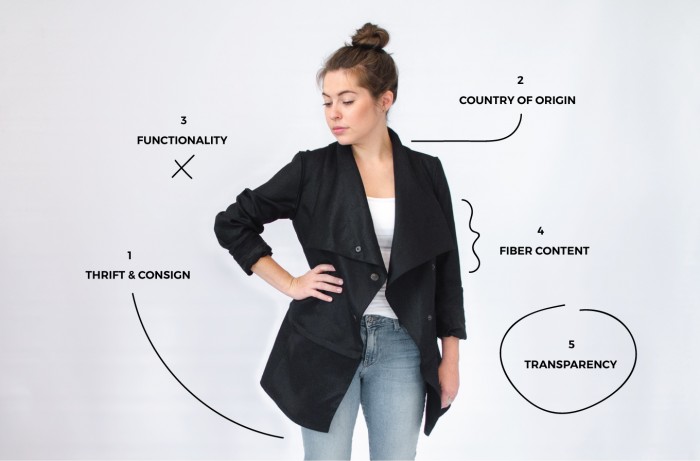
Every day, we make lots of small decisions about how we want to treat people and planet.
It’s exhausting to weigh these costs all day, every day. Many of us try our best to recycle, compost, buy organics, and follow the very basic rules of being good to the Earth.
But what about all of our other purchases?
As an apparel designer, I think about this a lot. I create and manufacture clothing for a living, and talk with customers often about the hard decisions around buying clothes. Questions like “how can you tell if something is sustainable?” and “What does sustainability even mean?” are always part of the conversation.
After years of research, piles of books, and numerous interviews with CEO’s, farmers, professors, and the general public, I’ve begun to form my own rules around shopping and clothes. It’s like a guidebook for making shopping decisions that can seem small, but have such an impact. In fact, after oil/gas, fashion is considered the most polluting industry on the planet.
Here’s my rulebook for buying apparel sustainably:
1. Thrift and consignment shop when you can.
Yes, some things you need to buy new, but many basic items like sweaters and button-ups can be found and almost any thrift or consignment store. This is my first rule, because buying something “new” should be a last resort, or saved for times when you need something quickly for an event, work, etc.
2. Only buy domestically-made or fair trade.
I always go for locally-made first, and then expand my sights on transparent, fair trade brands. When a tag says the country of origin, that means where the product was sewn. Sewing is the most human labor-intensive part of the process, so this often feels more important to me than what type of fabric the garment was made from.
3. Consider the number of uses.
Ask, “Can I wear this to work and to brunch?” and “Can I wear this in multiple seasons, or year-round?” For those of us trying to curb our wardrobes and pare down, function matters. Choose clothes that you can picture in different places and climates—you’ll keep them longer and get more use.
4. Check the fiber content.
Here’s my list of good fabrics: hemp, organic cotton, tencel, lyocell, recycled poly (or any fiber), wool, modal, cupro, peace silk.
5. Ask about the brand.
Transparency is one of the most important values a clothing company can have, so I like to do a little research on the brand (this is where shopping online is nice). Who are they? What do they care about? Indie brands always get preference, but even big-name transparent brands can win my purchase if their credentials back up their clothing—fair trade, sustainable fibers, locally made, buyback programs, zero-waste, etc.
More awesome from Kristen:
John Oliver’s 17 Minute Takedown of Wasteful Fast Fashion.
Why Does American-Made Clothing Cost More?
Check her out on our Walk the Talk Show!
Author: Kristen Glenn
Editor: Renée Picard
Photo: via the author

 Share on bsky
Share on bsky






Read 4 comments and reply